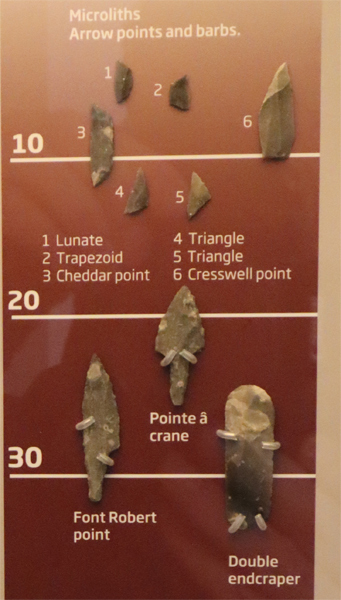Cave in Georgia Reveals Evidence of Prehistoric Flax Fibres
An analysis of clay layers by scientists in a cave in Georgia revealed evidence of microscopic fibres of wild flax, signs of Homo sapiens use of flax to make clothing and ropes.
Earliest Known Man-made Fibres
A team of archaeologists have published research in the scientific journal “Science” indicating that 34,000 years ago our ancestors were using wild flax to make clothing and to weave rope and string. A team funded by the United States found the flax fibres by chance as they microscopically studied clay sediments in the cave. The fibres are the earliest known, the humans inhabiting the cave probably turned the fibres into linen and thread. Warm clothing would have helped our ancestors cope with the cold environment and the ability to make rope and string would have added their ability to tie packs and break camp helping them to be more mobile in their quest for food.
Typical Early Stone Tools
Picture credit: Everything Dinosaur
The researchers claim that these ancient fibres, some of which have been twisted, indicating that they were being used to make ropes or string, would have increased the survival chances of these ancient people.
Homo sapiens
Professor of Archaeology at Harvard University, Ofer Bar-Yosef and co-leader of the research team stated:
“We know that this is wild flax that grew in the vicinity of the cave and was exploited intensively or extensively by modern humans. This was a critical invention for early humans. They might have used this fibre to create parts of clothing, ropes, or baskets for items that were mainly used for domestic activities”.
Some of the tiny, microscopic fibres, show evidence of being dyed, these were perhaps part of clothing that has long since rotted away. Once the fibres had been discovered the soil samples that contained them were dated using radio carbon techniques. This study was undertaken by the Palaeobiology department of the National Museum of Georgia. The fibre samples pre-date the previously earliest known fibres found by 6,000 years. Prior to this new discovery, the oldest fibres known were recovered from a site in the Czech Republic, from an analysis of the remains of clay objects found inside a cave.
Exploring the Cave System
The American backed team have been exploring the cave system at the site in Georgia for more than 10 years returning for a few weeks each year so that they can build up a comprehensive database on the lives and habits of our ancestors. The team hope to return to the caves next year in a bid to find evidence of even older fibres in the clay sediments.
Everything Dinosaur stocks a range of early hominid models and figures including Neanderthals and replicas of early Homo sapiens.
For instance, take a look at the: Wild Safari Prehistoric World model range.







Leave A Comment